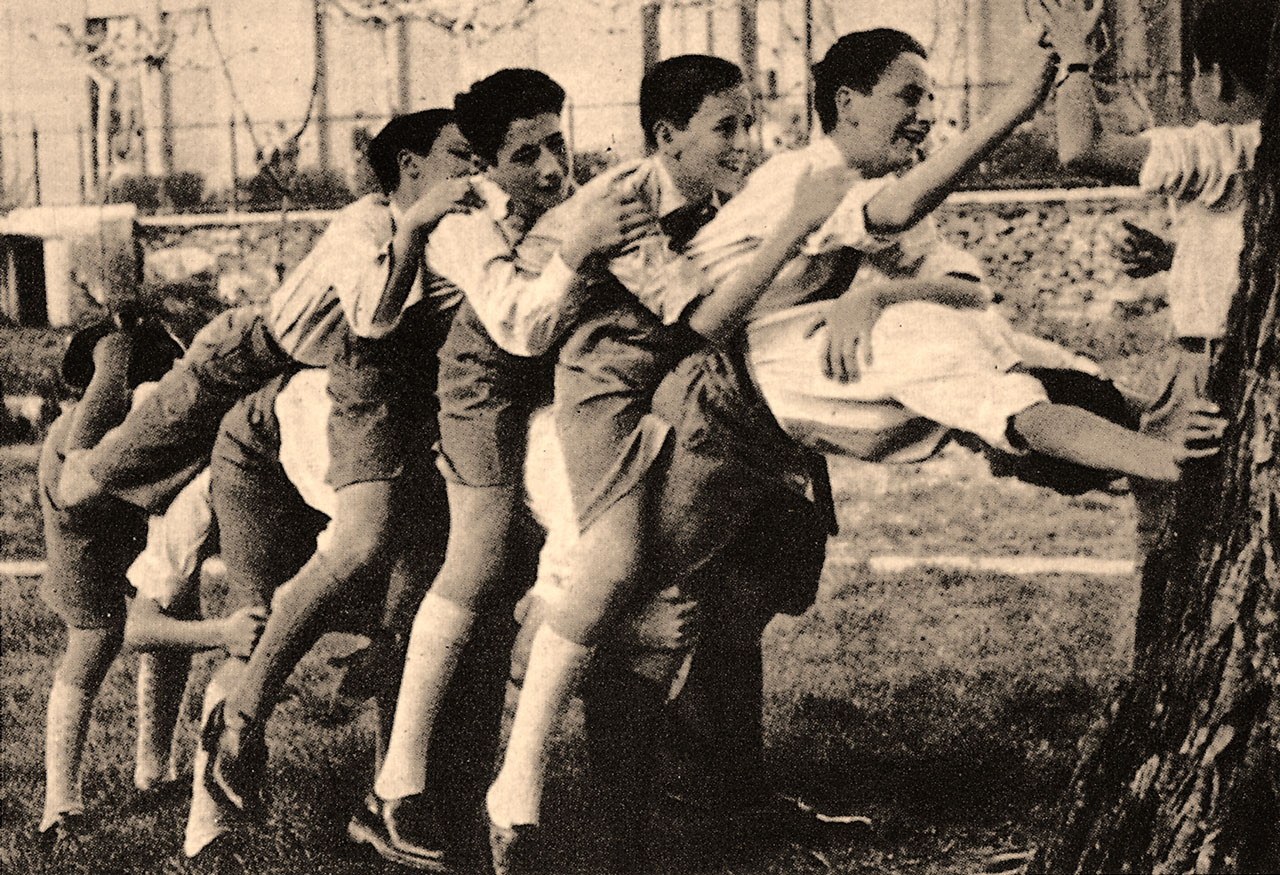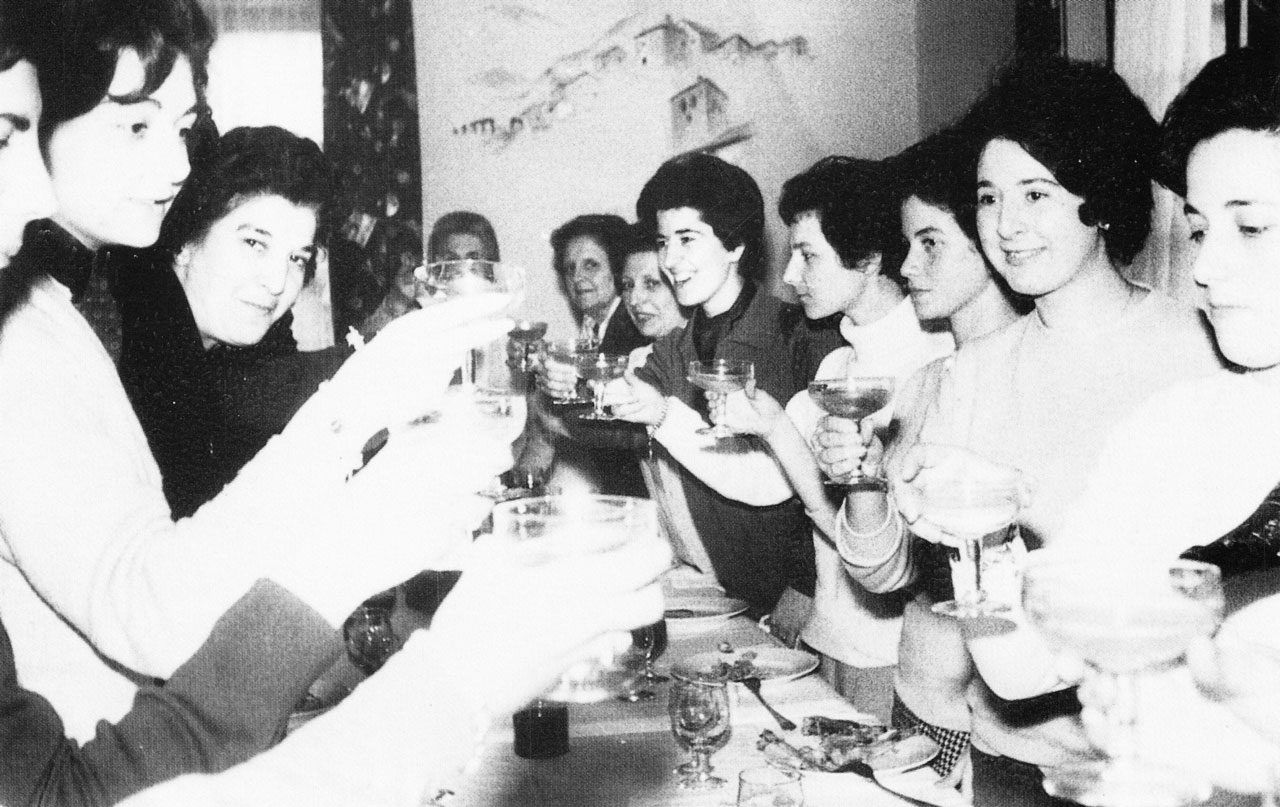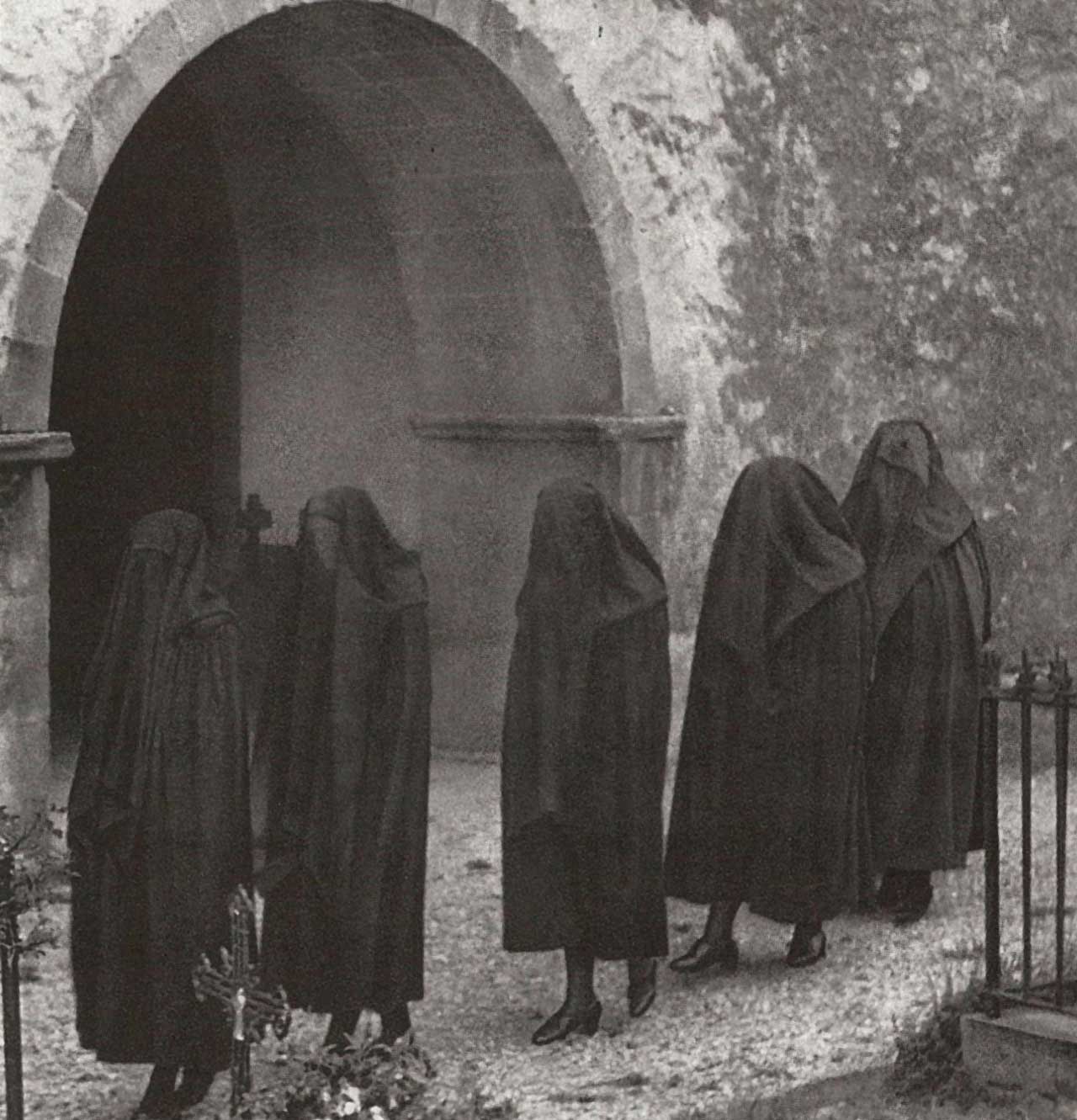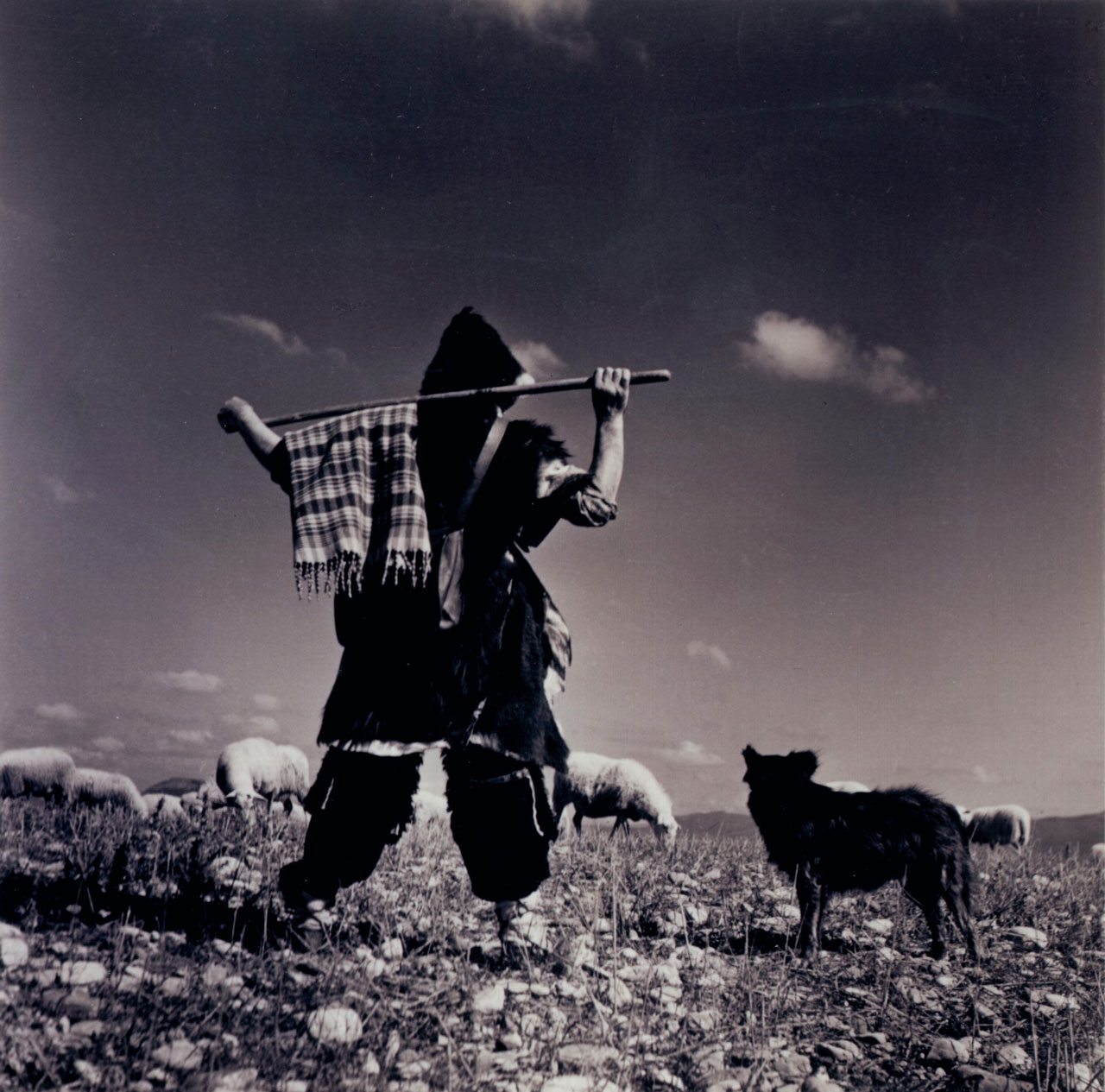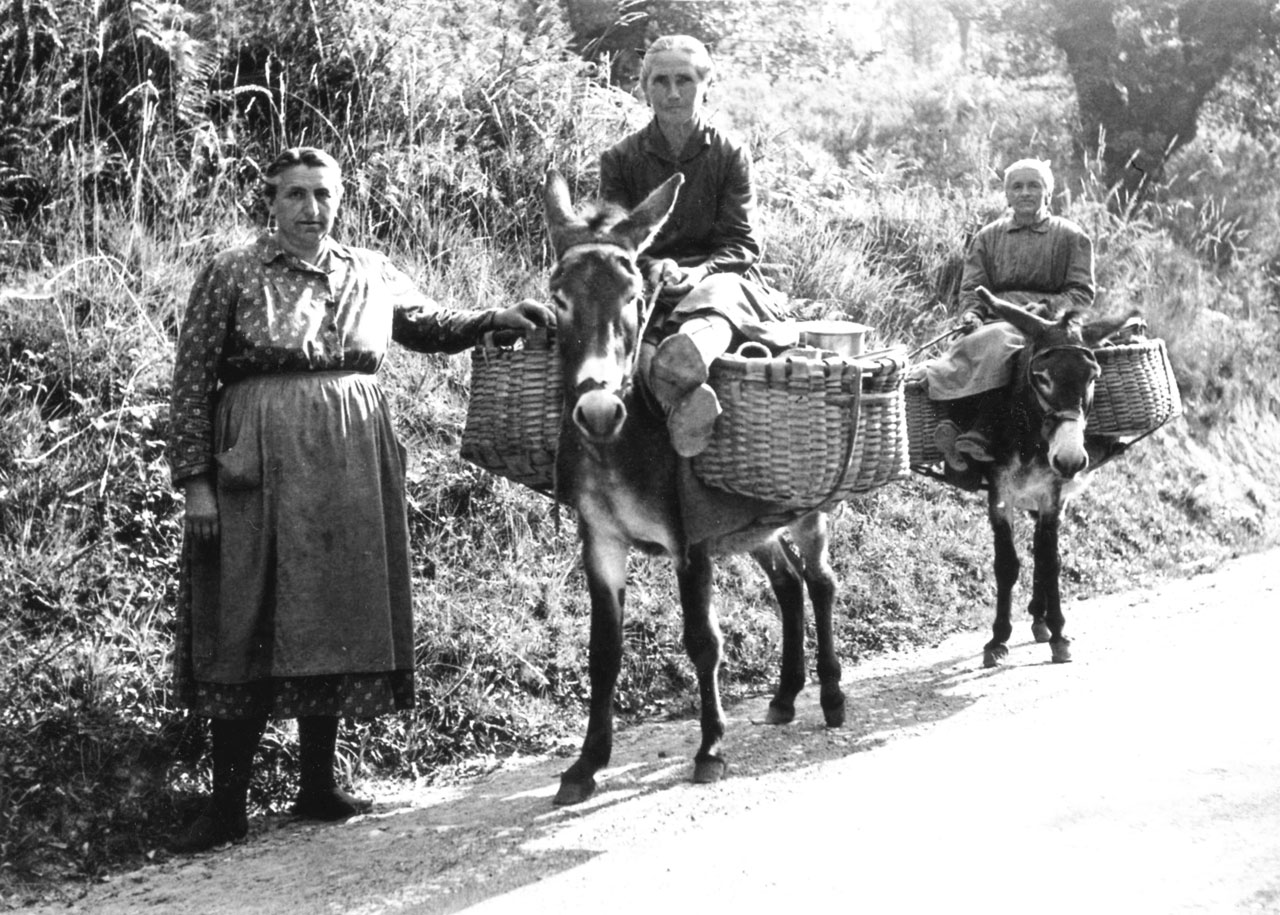Diferencia entre revisiones de «Main Page/en»
De Atlas Etnográfico de Vasconia
| Línea 186: | Línea 186: | ||
====[/atlas/ritos/Portadores-del-feretro-jasotzaileak-Amezketa.jpg|Coffin bearers. Amezketa (G). Source: Antxon Aguirre, Etniker Euskalerria Groups.|Death was an event that usually occurred in the neighbourhood, a fact that meant the home of the deceased played a leading role.|]==== | ====[/atlas/ritos/Portadores-del-feretro-jasotzaileak-Amezketa.jpg|Coffin bearers. Amezketa (G). Source: Antxon Aguirre, Etniker Euskalerria Groups.|Death was an event that usually occurred in the neighbourhood, a fact that meant the home of the deceased played a leading role.|]==== | ||
| − | ====[/atlas/ritos/Adornando-las-sepulturas-para-el-dia-de-Todos-los-Santos-Bilbao-1990.jpg| | + | ====[/atlas/ritos/Adornando-las-sepulturas-para-el-dia-de-Todos-los-Santos-Bilbao-1990.jpg|Caring for the graves on the occasion of All Saints’ Day. Bilbao (B), 1990. Source: Labayru Fundazioa Photograhic Archive: José Ignacio García Muñoz.|Omens of death included those associated with strange behaviour by some domestic animals, mainly dogs and cockerels.||ENLACE]==== |
| − | ====[/atlas/ritos/Santa-Grazi.jpg|Santa-Grazi (Z). | + | |
| − | ====[/atlas/ritos/Sepulturas-en-la-nave-de-la-iglesia-Amezketa-1990.jpg| | + | ====[/atlas/ritos/Santa-Grazi.jpg|Santa-Grazi (Z). Source: Boissel, W. Le Pays Basque. Sites, Arts et Coutumes. Paris, A. Calavas edit.|Cuando el cárabo canta, la muerte levanta. <br />''When the tawny owl hoots, death wakes up.''||ENLACE]==== |
| − | ====[/atlas/ritos/Toque-de-campana-anunciando-la-muerte-Beasain.jpg| | + | |
| − | ====[/atlas/ritos/Cortejo-funebre-1925.jpg| | + | ====[/atlas/ritos/Sepulturas-en-la-nave-de-la-iglesia-Amezketa-1990.jpg|Symbolic graves in church. Amezketa (G), 1990. Source: Antxon Aguirre, Etniker Euskalerria Groups.|Each homestead used to have a burial site inside the church’s nave. When burials were transferred to cemeteries, the once real burial site in church became a symbolic family grave, were offerings of light and bread were made to their dead.||ENLACE]==== |
| − | ====[/atlas/ritos/Mujeres-con-ofrendas-Otxagabia-1920.jpg| | + | |
| − | ====[/atlas/ritos/Ofrenda-de-luces-Amezketa.jpg| | + | ====[/atlas/ritos/Toque-de-campana-anunciando-la-muerte-Beasain.jpg|Death knell. Beasain (G). Source: José Zufiaurre, Etniker Euskalerria Groups.|Tolling the bell was a very effective way of announcing the death in rural settlements.||ENLACE]==== |
| − | ====[/atlas/ritos/Duelo-femenino-Sara.jpg| | + | |
| − | ====[/atlas/ritos/Anuncio-de-la-muerte-a-las-abejas.jpg| | + | ====[/atlas/ritos/Cortejo-funebre-1925.jpg|Funeral cortège, c. 1925. Source: Antxon Aguirre, Etniker Euskalerria Groups.|There were specific paths to carry the corpse from the house of the deceased to the church and the cemetery.||ENLACE]==== |
| − | ====[/atlas/ritos/Amortajamiento-de-un-nino-Durango.jpg| | + | |
| − | ====[/atlas/ritos/Pipaon-1990.jpg|Pipaón (A), 1990. | + | ====[/atlas/ritos/Mujeres-con-ofrendas-Otxagabia-1920.jpg|Offering bearers. Otsagabia (N), c. 1920. Source: Fco. Javier Zubiaur and M.ª Amor Beguiristain’s private archive: Roldán and Calle Photographic Studios.|The members of the funeral cortege, relatives of the deceased and neighbours alike, would usually carry offerings of bread and light.||ENLACE]==== |
| − | ====[/atlas/ritos/Hilarriak-Irulegi.jpg| | + | |
| + | ====[/atlas/ritos/Ofrenda-de-luces-Amezketa.jpg|Light offerings. Amezketa (G). Source: Garmendia Larrañaga, Juan. Neguko Festak. Donostia, 1993, J. Juanes Photographic Archive.|Light offerings would light up the way for the soul of the deceased. And bread would sustain it.||ENLACE]==== | ||
| + | |||
| + | ====[/atlas/ritos/Duelo-femenino-Sara.jpg|Mourners. Sara (L). Source: Veyrin, Philippe. Pays Basques de France et d’Espagne. Paris-Grenoble, 1951.|Sorrow was expressed by wearing mourning.||ENLACE]==== | ||
| + | |||
| + | ====[/atlas/ritos/Anuncio-de-la-muerte-a-las-abejas.jpg|Telling the bees. Source: ''Gure Herria''.|Erletxuak, erletxuak, <br />egizute argizaria, <br />nagusia hil da-ta, <br />behar da elizan argia. <br /><br /> | ||
| + | ''Ritual formula to inform the bees of their keeper’s death''||ENLACE]==== | ||
| + | |||
| + | ====[/atlas/ritos/Amortajamiento-de-un-nino-Durango.jpg|Infant shroud. Durango (B). Source: Gerediaga Association Archive: Germán Photographic Studio.|Jaiotzetik heriotza zor. <br />''When you begin to live, you being to die.''||ENLACE]==== | ||
| + | |||
| + | ====[/atlas/ritos/Pipaon-1990.jpg|Pipaón (A), 1990. Source: Pilar Alonso, Etniker Euskalerria Groups.|Hildakoari hobia eta biziari ogia. <br />''The dead to the grave and the living to the roll.''||ENLACE]==== | ||
| + | |||
| + | ====[/atlas/ritos/Hilarriak-Irulegi.jpg|Funerary stelae. Irulegi (NB). Source: Michel Duvert, Etniker Euskalerria Groups.|Oilarrak gauez kukurruku jotzen badu, laster izango da gorpuren bat etxe hartan. <br />''A cockerel crowing at sunset, death is looming.''||ENLACE]==== | ||
Revisión del 12:42 27 ene 2020
Cooking on the hearth. Apellániz (A), 1981. Source: López de Guereñu, Gerardo. “Apellániz. Pasado y presente de un pueblo alavés” in Ohitura 0, Vitoria-Gasteiz: Chartered Government of Álava, 1981.
House and Family in the Basque Country


House and Family in the Basque Country
The kitchen in the farmsteads was where people would usually gather together and was at the heart of family life.
Family Diet in the Basque Country


Family Diet in the Basque Country
Maize, introduced in the 17th century, and potatoes, in the 19th, would revolutionise the Basque diet.
Group of children. Zeanuri (B), 1920. Source: Labayru Fundazioa Photograhic Archive: Felipe Manterola Collection.
Children’s Games in the Basque Country


Children’s Games in the Basque Country
Children in the traditional society, both in towns and in countryside, only really had the toys that they made themselves. Games were more common than toys, and the latter were just a basis for the former.
Traditional Medicine in the Basque Country


Traditional Medicine in the Basque Country
There is a hidden wisdom behind popular medicine that goes far beyond the remedy itself. This collection of data helps us catch a glimpse of a way to understand health and disease —and ultimately the human body— that differs from the prevailing view.
Rites from Birth to Marriage in the Basque Country


Rites from Birth to Marriage in the Basque Country
The transfer of the chattels was a ritualised act of great importance as it marked the entry of the new spouse in the home, etxe-sartzea.
Funeral Rites in the Basque Country


Funeral Rites in the Basque Country
Sorrow was expressed by wearing mourning.
Ganaderia y pastoreo en Vasconia


Ganaderia y pastoreo en Vasconia
Nolako artzaina, halako artaldea. Tarde o temprano todo animal se parece al amo.
Agricultura en Vasconia


Agricultura en Vasconia
Nuestros antepasados conocieron y practicaron una agricultura cuya escala era más humana y con una visión más holística, donde no solo se tenía en cuenta el rendimiento sino también la compleja red de factores físicos y seres vivos implicados en una actividad que en definitiva se basa en cultivar la vida que nos da alimento.


